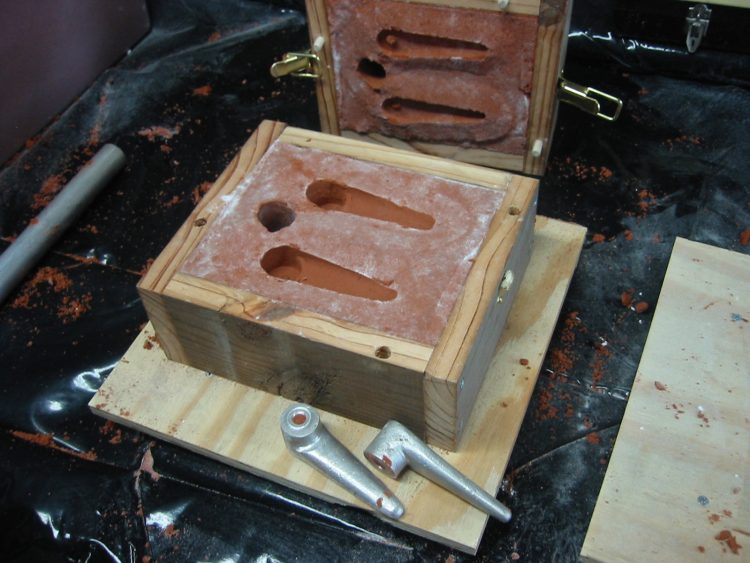Metal is an extremely important material in the fabrication of products. In this article, we are going to discuss the manufacturing of parts. Metal construction or fabrication plays a vital role in building metal products. Metal fabrication is the process of drafting metal parts from raw materials using different procedures such as cutting, machining, forming, assembling, and bending.
Metal parts have become crucial for many industries and household requirements that make our life easier and better. In metal fabrication, some new machines and technologies can perform precision measurements and forming. This process employs molybdenum, tantalum, tungsten, rods, billets, plate, wire, tube form, and niobium in sheets to produce the new custom metal parts. Various types of manufacturing have different strengths and compatibility that deliver an understandable range of products. There is an overview of the metal fabrication process to utilize custom metal parts.
1. Sand Casting of Metal Parts
2. Die Casting(high volumes of complex metal parts)
3. CNC Machining (removing material)
4. Extrusion(pushing metal into a die)
5. Metal Injection Molding(large volume production process)
6. Forging(shaping the metal)
7. Stamping(cutting and bending parts)
8. Metal 3D Printing(beneficial for low volume parts)
Sand Casting of Metal Parts
Sand casting, often called sand molding casting, is a casting-based manufacturing process that uses a sand mold. It is used to fabricate metal parts of various sizes and forms. Sand casting accounts for over 60% of all metal castings.
Sand casting is one of the oldest and most cost-effective methods for making metal products. Controlling the structure and qualities of green sands and cores is critical for high-quality metal components and structures.
Die Casting
Die casting is a metal casting method that uses a furnace, metal, die casting equipment, and die to drive metal into steel molds. It requires two large moving nonferrous metal parts that clasp together to inject into the dying machine.
Die casting is excellent for high-volume manufacturing, unlike traditional metal casting. It usually supports paints, plating, and finishes with high-stress equipment where strength is essential.
CNC Machining
CNC Machining is a fabrication process controlled by a computer used to cut raw materials into the desired shape by using a material removal process. The two main categories of CNC machining are milling(multi-point cutting tool) and turning(single cutting tool).
Both CNC machine categories are controlled using the programming language G-code that provides machine movement instructions. Mills and turning to use the same materials for production such as bronze, copper, steel, aluminum, zinc alloy, etc.
Moreover, CNC mills and CNC turning come with rapid prototyping and preciseness suitable for high and low volume production. Nowadays, every industry uses CNC machining to turn and mill metal parts.
Extrusion
Extrusion is a metal forming technique that involves forcing hot metal or plastic into a die.
The die creates the net-shape into a tube or L-shape, and more complex structures can be constructed using this technique because it allows efficient continuous production.
There are three types of extrusion: hot extrusion, cold extrusion, and friction with different reliable functions for moderate temperature. It is a simple method for producing windows, railing, and flooring applications.
Metal Injection Molding
Metal injection molding (MIM), sometimes called power injection molding, is a metalworking process for forming a near-net-shape part in high quantities in which metal is mixed with a binder material shaped using injection molding.
As injection molding is commonly used for plastic productions, while metal injection molding is for custom metal parts production.Metal injection molding uses metals blended with a polymer for injection, and its tools are longer than other metal manufacturer methods.
Forging
Forging is a manufacturing process in which metals are formed and shaped with the help of compressing forces that are delivered with a power hammer or die. Forging is often categorized according to the temperature, which is cold and warm forging. The parts are manufactured using five steps heating, performing, forging, cooling, and finishing.
Forge parts are more vital than parts from other methods and range from kilograms to hundred metric tons. Usually, automotive industries use this method for shock and stress applications.
Stamping
Stamping, also called pressing, is used for turning flat metal stock into a coil or cavity to transform a sheet into a specific shape often made of aluminum, copper, or steel.
Metal sheets are structured into desirable forms by cutting, bending, and punching through stamping machines. It could be a single-stage operation generally used in the electronic, appliance, and automotive industries. The two types, including hydraulic and mechanical presses, provide different functions in this process.
Metal 3D Printing
Metal 3D printing uses precise laser technology to create low volume, low cost, and shorter lead time. It is also known as additive manufacturing that emerges metal into a controlled environment through an energy source.
3D printing uses atomized powder, titanium, aluminum, copper, and sometimes sheet or wire-fed materials. It is famous for the quick manufacturing of parts and mass production of custom tools and instruments. It is best to produce functional prototypes, ductwork, surgical and dental implants, spare parts, and more.
Conclusion
Designers and engineers must be familiar with the materials, manufacturing processes, and application scenarios to decide the most appropriate ways to generate them. This article provides an overview of the many manufacturing procedures used to make customized metal parts.

